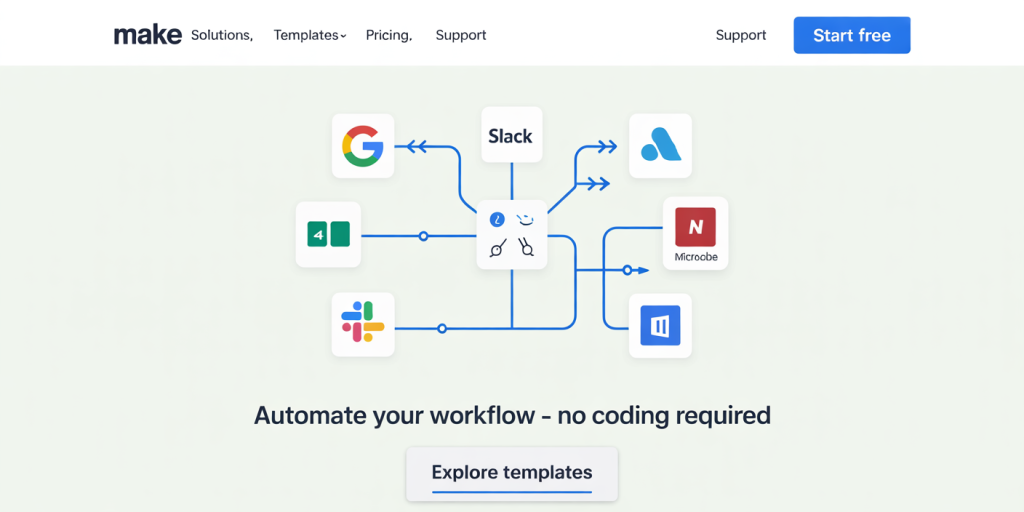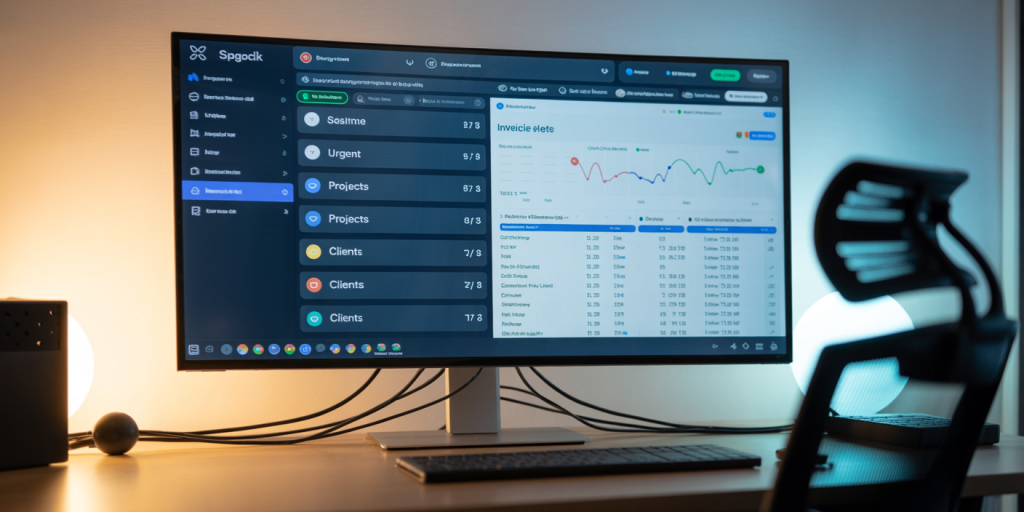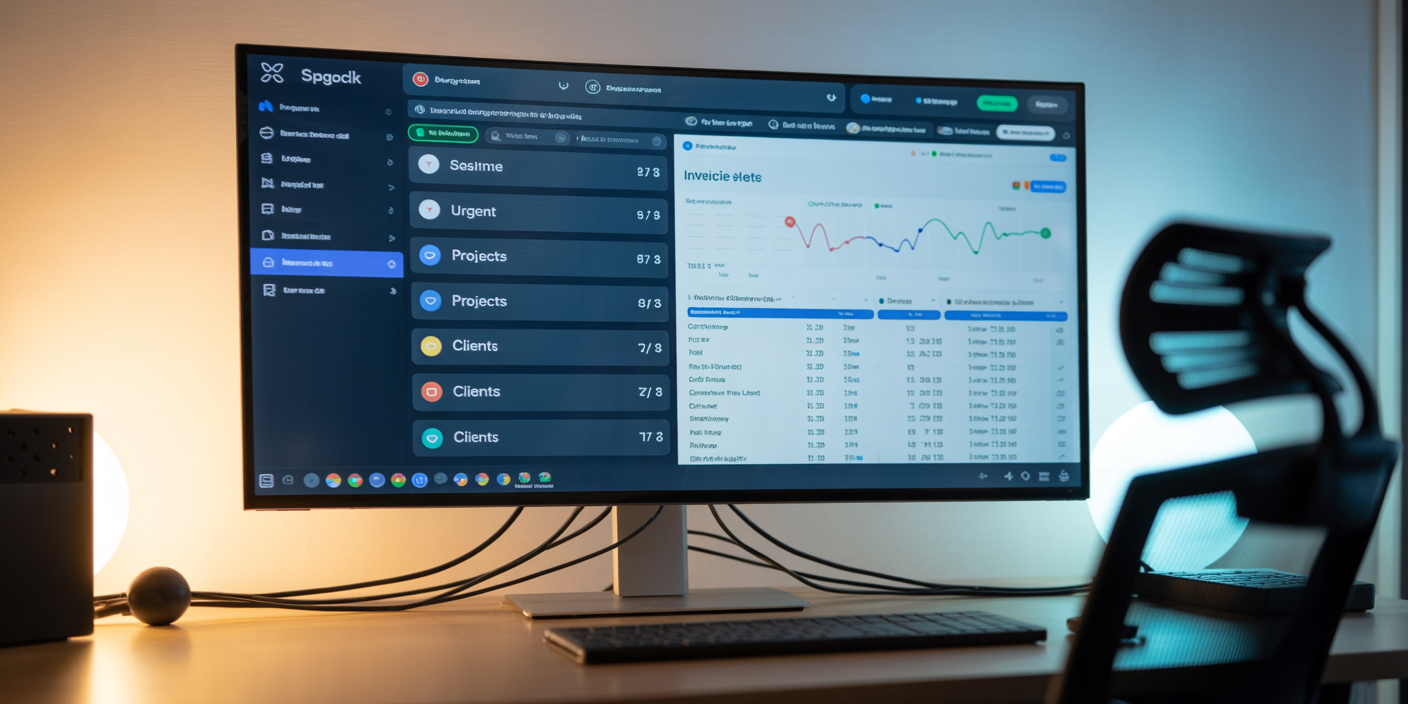Simple Automation Recipes to Save an Hour a Day Using Make.com
In today’s fast-paced digital world, productivity is paramount. Many professionals find themselves overwhelmed with repetitive tasks that drain time and focus. According to a McKinsey report, knowledge workers spend nearly 28% of their workweek on repetitive tasks, which could be automated to increase efficiency. Make.com, formerly known as Integromat, offers an intuitive platform for automating workflows across multiple apps and services, enabling users to reclaim valuable time daily. This article explores practical automation recipes using Make.com that can save you at least an hour every day, spotlighting real-world applications and data-backed benefits.

Maximizing Productivity by Automating Routine Tasks
At the core of Make.com is the ability to visually design automation scenarios that connect different apps without writing a single line of code. This empowers individuals and teams to streamline operations such as data entry, communication management, reporting, and more. For instance, sales representatives can automate lead follow-ups, while marketers can simplify social media posting workflows.
The versatility of the platform supports over 1000 applications, including Google Workspace, Slack, Airtable, and Microsoft Teams. By integrating these tools effectively, professionals shift their focus from tedious chores to creative and strategic work. An experimentation by Zapier showed that business users implementing automation save up to 10 hours per week on average — roughly equal to 2 workdays.
Automate Email Organization and Prioritization
Email overload remains one of the top productivity killers. The Radicati Group estimates that the average office worker receives 121 emails daily, with about 77% being work-related. Managing this influx manually consumes substantial attention and delays action on important messages.
Make.com allows users to build recipes that automatically filter, label, and prioritize emails based on sender, subject, or content. For example, when an email arrives from a key client or contains specific keywords like “invoice,” the automation can forward it to Slack channels for immediate team visibility or move it to a priority folder in Gmail.
Practical Case: A small business owner configured a scenario linking Gmail with Google Sheets and Slack. Whenever an invoice email arrives, the details get logged into a spreadsheet for accounting and simultaneously notify the finance team on Slack. This saved about 15 minutes daily compared to manual processing — contributing significantly to the daily hour savings target.

| Task | Manual Time Spent | Time Saved by Make.com Automation |
|---|---|---|
| Sorting and labeling important emails | 20 minutes | 15 minutes |
| Notifying team about priority emails | 10 minutes | 10 minutes |
| Logging invoice details | 15 minutes | 15 minutes |
Streamline Social Media Content Scheduling
Consistent content publishing is critical for brand growth, but managing multiple platforms drains time. Buffer’s data reveals marketers spend 6 hours a week scheduling social posts, often dealing with repetitive tasks like copying captions or resizing images.
Make.com offers automation to schedule posts by integrating existing content repositories like Google Drive, Trello, or Airtable with platforms like Twitter, Facebook, and LinkedIn. A common recipe pulls content from a spreadsheet, processes scheduling dates, and publishes posts automatically based on pre-set criteria.
Practical Case: A marketing agency uses Make.com to automate content deployment. Their workflow fetches captions from Airtable, uploads images from Google Drive, and queues posts in Buffer. This reduced manual scheduling time from about 90 minutes daily to barely 30 minutes, liberating 1 hour over the day.

| Social Media Task | Time Spent Without Automation | Time After Automation | Daily Time Saved |
|---|---|---|---|
| Content compilation | 60 minutes | 10 minutes | 50 minutes |
| Post scheduling and uploads | 30 minutes | 20 minutes | 10 minutes |
Automate Customer Relationship Management (CRM) Updates
Maintaining updated client information is critical but often tedious. Data from HubSpot indicates that sales reps spend nearly 64% of their time on non-selling activities like data entry and logging communications. Make.com automations can bridge CRM platforms such as Salesforce, HubSpot, or Pipedrive with email, calendar, and messaging apps to keep data in sync effortlessly.
One effective recipe is automating contact creation and activity logging. For example, when a customer books a meeting via Calendly or fills out a form on the website, Make.com can automatically add or update customer records, tag stages, and generate follow-up tasks.
Practical Case: A B2B startup implemented a Make.com scenario connecting Calendly, HubSpot, and Slack. Each scheduling event triggers instant entry updates and alerts for the sales team, eliminating redundant admin work and improving responsiveness. The team saved approximately 20 minutes daily on CRM updates alone.
| CRM Activity Task | Manual Time Spent | Automated Time | Time Savings |
|---|---|---|---|
| Adding or updating contacts | 15 minutes | 2 minutes | 13 minutes |
| Logging meeting notes | 25 minutes | 3 minutes | 22 minutes |
| Assigning follow-ups | 10 minutes | 1 minute | 9 minutes |
Automate Report Generation and Distribution
Report creation is an essential but time-intensive task usually performed at the end of each day or week. According to a survey by Software Advice, data management and report compilation take 10-20 hours per month for many teams. Make.com helps automate collection, analysis, and distribution by linking data sources such as Google Sheets, Excel, databases, and email platforms.
A practical scenario could involve aggregating sales data from multiple sources into Google Sheets, generating charts, and emailing key stakeholders automatically every morning. This increases accuracy by reducing manual errors and ensures timely communication.
Practical Case: An e-commerce business used Make.com to generate daily sales reports from Shopify, update Google Sheets dashboards, and send email summaries to managers and partners. The automation reduced report preparation time from one hour to five minutes per day, freeing 55 minutes.
| Report Task | Manual Time | Automated Time | Time Saved |
|---|---|---|---|
| Data gathering | 30 minutes | 2 minutes | 28 minutes |
| Report formatting | 20 minutes | 2 minutes | 18 minutes |
| Email distribution | 10 minutes | 1 minute | 9 minutes |
Future Perspectives: The Evolving Role of No-Code Automation
As Make.com and similar platforms continue evolving, automation recipes will become more user-friendly, intelligent, and integrated with AI-driven analytics. Future trends indicate that routine workflows will be capable of self-optimization by learning from usage data and user feedback. This means that simple recipes today could soon transform into adaptive systems that predict needs and suggest automation enhancements automatically.
The increasing adoption of no-code automation is supported by Gartner projections, which estimate that by 2025, 70% of new applications developed by enterprises will use low-code or no-code platforms. This shift empowers non-technical workers to continuously optimize their workflows without heavy IT involvement.
Moreover, the proliferation of API-driven tools and enhanced app interoperability ensures that users will have more freedom to combine disparate services creatively. Advanced Make.com features like built-in modules for AI, HTTP requests, and custom functions further expand the horizon of what can be automated. By investing time in mastering such platforms, professionals can future-proof their productivity, save hours daily, and focus strategically on meaningful challenges.
Leveraging Make.com’s straightforward automation recipes enables individuals and organizations to tackle inefficiencies head-on. From email management and social media scheduling to CRM updates and report generation, these recipes represent practical steps to shave off at least one hour from daily routines. By embracing these tools, the modern workforce stands to significantly enhance output and work-life balance in an increasingly digital environment.
